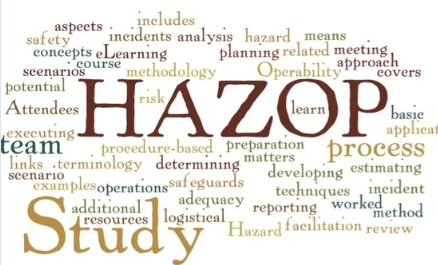Employee Participation in Safety
Safety is no longer just the responsibility of the management team or safety officers. In today’s modern workplace, employee participation in safety is not just encouraged—it’s essential. When employees are actively involved in creating and maintaining safety standards, the entire organization benefits. Accidents decrease, morale increases, and productivity skyrockets.
But here’s the thing: many companies still underestimate the power of employee involvement in safety initiatives. They roll out protocols from the top-down and hope that workers will comply. Spoiler alert—that rarely works.

In this blog post, we’ll explore:
- What employee participation in safety really means
- Why it’s crucial for long-term success
- Practical strategies to get your team involved
- Real-world examples and benefits
- Tips to overcome resistance and build a strong safety culture
Let’s dive in.
🛠️ What Is Employee Participation in Safety?
In simple terms, employee participation in safety means involving workers at every level in the planning, execution, and evaluation of workplace safety programs.
This includes:
- Reporting hazards
- Joining safety committees
- Contributing to risk assessments
- Providing feedback on safety protocols
- Participating in safety drills and training
It’s not just about attending a safety seminar once a year. It’s about making safety a shared responsibility—something everyone owns and contributes to, every day.
🚨 Why Is Employee Participation in Safety So Important?
You can have all the safety signs, equipment, and rules in the world—but if your employees aren’t on board, you’re still at risk.
Here’s why employee involvement matters:
✅ 1. Improves Hazard Detection
Employees are on the front lines. They’re the first to see when something’s off—whether it’s a leaky pipe, faulty machinery, or unsafe behavior. Their input is invaluable for identifying hazards early.
✅ 2. Builds a Safety-First Culture
When employees are part of the process, safety becomes cultural, not just procedural. It becomes ingrained in how they work.
✅ 3. Boosts Morale and Trust
Being included in safety decisions makes employees feel valued. It sends a clear message: “Your well-being matters, and your voice counts.”
✅ 4. Reduces Accidents and Downtime
With more eyes and ears tuned into safety, risks are caught faster—and that means fewer accidents, lower insurance premiums, and less operational downtime.
🧠 Psychology Behind Participation: The Ownership Effect
There’s a psychological principle called the “IKEA Effect”—when people help build something, they value it more.
The same goes for safety.
When employees are part of the process—whether it’s writing safety policies or leading toolbox talks—they’re more likely to take ownership of those practices and follow them consistently.
🔄 What Real Participation Looks Like (Examples)
Let’s look at some real-world ways companies are putting employee participation into action:
📌 Example 1: Safety Suggestion Programs
A manufacturing firm set up a “Safety Ideas Box” where employees could anonymously submit suggestions. Every month, the best one was recognized—and sometimes rewarded. Participation skyrocketed.
📌 Example 2: Peer-to-Peer Audits
Instead of relying only on supervisors, one logistics company trained frontline workers to conduct peer safety audits. They uncovered 3x more hazards than traditional inspections.
📌 Example 3: Joint Safety Committees
In a construction company, site workers and management formed a joint safety committee. This balanced team ensured policies were realistic, not just idealistic.
These aren’t one-time campaigns. They’re ongoing habits that weave safety into the fabric of daily work life.
📋 How to Encourage Employee Participation in Safety
Getting employees involved doesn’t have to be complicated. But it does require intentional leadership. Here’s how to do it:
🗣️ 1. Open the Lines of Communication
Start by inviting feedback. Make it easy—and safe—for employees to speak up.
- Use anonymous surveys
- Set up suggestion boxes
- Host open-door Q&A sessions
Make sure they know their opinions are heard and respected.
🧑🏫 2. Train Beyond the Basics
Mandatory safety training often feels like a chore. Instead, make it engaging and interactive.
- Use real-life scenarios
- Involve employees in leading sessions
- Gamify with quizzes and rewards
When training is fun and relevant, participation goes up.
🤝 3. Create Ownership Opportunities
Give employees real roles in your safety program:
- Safety representatives
- First aid volunteers
- Fire drill leaders
- Risk assessment team members
Ownership creates commitment. And commitment creates results.
🏆 4. Recognize and Reward Participation
A little recognition goes a long way.
- Celebrate “Safe Employee of the Month”
- Highlight success stories in newsletters
- Offer small incentives for proactive behavior
When safety champions are visible, others will follow.
📈 5. Measure and Share Results
Show employees the impact of their efforts. Share safety stats, near-miss reductions, and success stories during team meetings.
This reinforces the idea that their participation makes a difference.
🧱 Common Barriers—and How to Break Them
Let’s be real: Not every employee will jump at the chance to get involved. Here are some common challenges and how to overcome them:
❌ “It’s not my job.”
✅ Solution: Reframe safety as everyone’s job. Use team huddles to reinforce shared responsibility.
❌ “Management doesn’t listen anyway.”
✅ Solution: Close the loop. Always follow up on feedback—even if you can’t act on every suggestion.
❌ “We’ve always done it this way.”
✅ Solution: Introduce small, low-risk changes first to build trust. Then scale up.
❌ “I don’t want to get blamed.”
✅ Solution: Promote a blame-free culture. Focus on learning from mistakes, not punishing them.
🧮 The ROI of Employee Involvement in Safety
If you’re a numbers person, here’s why this matters from a business standpoint:
- 70% of workplace accidents are preventable through proactive safety behavior
- Companies with strong safety cultures see up to 40% fewer injuries
- Investing $1 in safety yields an average $4 to $6 return (OSHA)
- Fewer incidents = lower insurance premiums and higher productivity
When employees participate in safety, they don’t just avoid accidents—they build stronger, smarter organizations.
🔧 Tools That Encourage Participation
Technology can help make safety a team sport. Consider these tools:
- Mobile safety reporting apps (e.g., iAuditor, SafetyCulture)
- Collaborative platforms like Slack or Microsoft Teams for safety updates
- Digital dashboards to track safety KPIs in real time
- Learning management systems (LMS) for ongoing safety education
The goal? Make participation simple and accessible, even for remote or field teams.
💬 Final Thoughts: Safety Is a Team Effort
At the end of the day, employee participation in safety is about trust, communication, and shared responsibility.
When employees feel like they’re part of the solution, not just part of the machinery, they step up. They speak out. They watch each other’s backs. And that’s when real safety magic happens.
So if you’re a business owner, safety manager, or team leader, remember this:
👉 Involve your people. Empower your people. Trust your people.
Because the safest workplaces aren’t built from rules—they’re built from relationships.
📢 Join the Conversation!
Have you implemented employee participation strategies in your workplace? Got a success story (or even a failure you learned from)? Share it in the comments below! Let’s build safer workplaces—together.
✅ Suggested Links:
- Safety Management’s Role: The Unsung Hero Behind Every Successful Organization
- Safety Management and Its Responsibilities: Protecting People, Preventing Hazards, and Promoting a Culture of Care
- Benchmarking for Safety Performance: A Key to Continuous Improvement
“Start Your Website Journey Today – Exclusive Hostinger Discounts!”

Turn Any Idea into Viral,
Jaw-Dropping AI Videos in Seconds!









